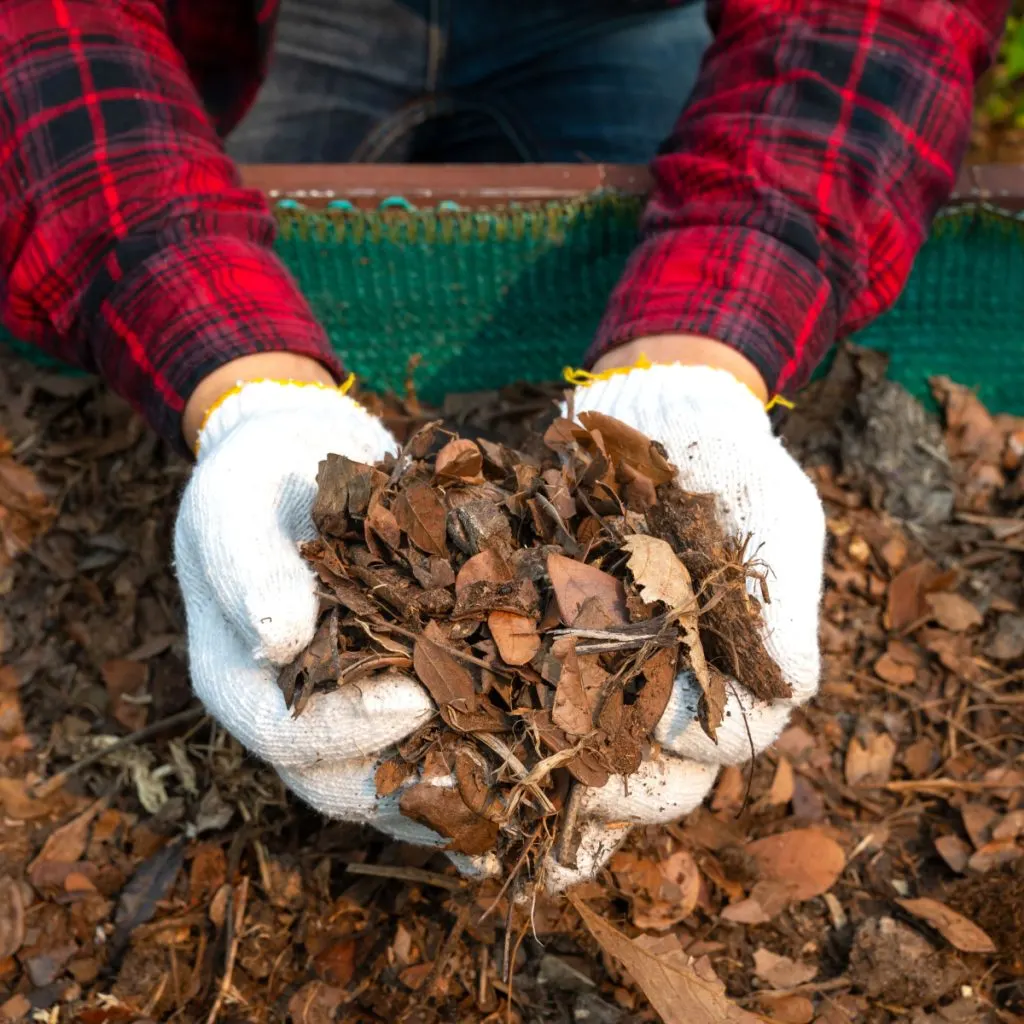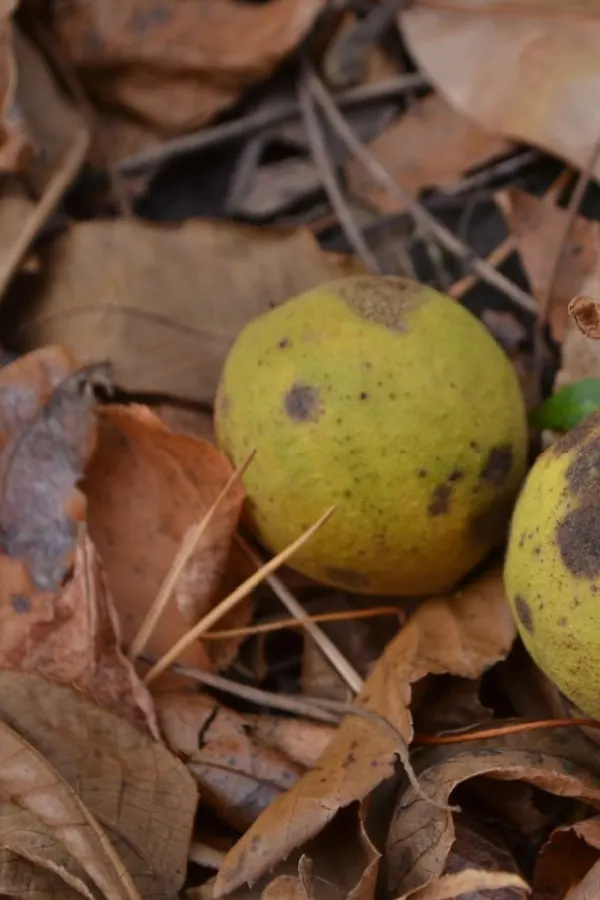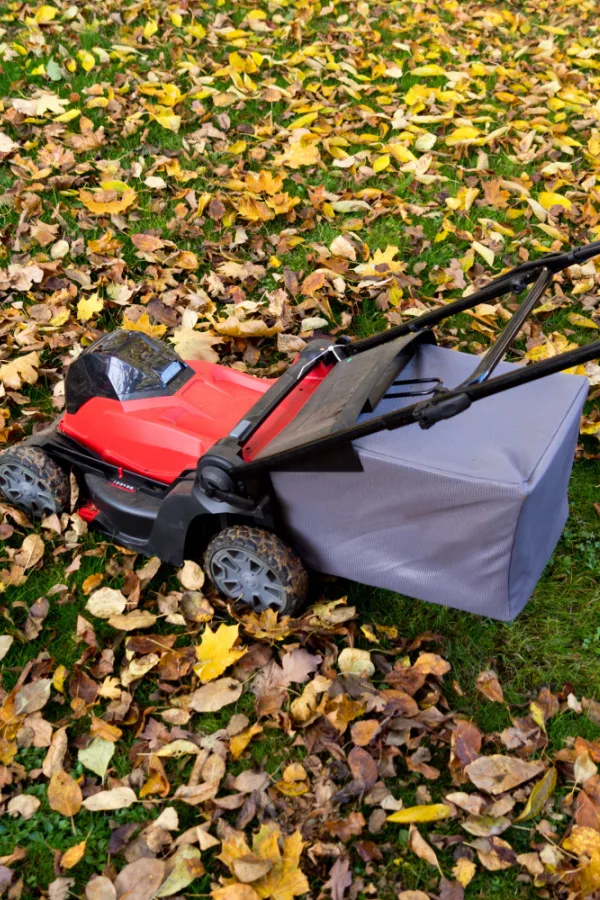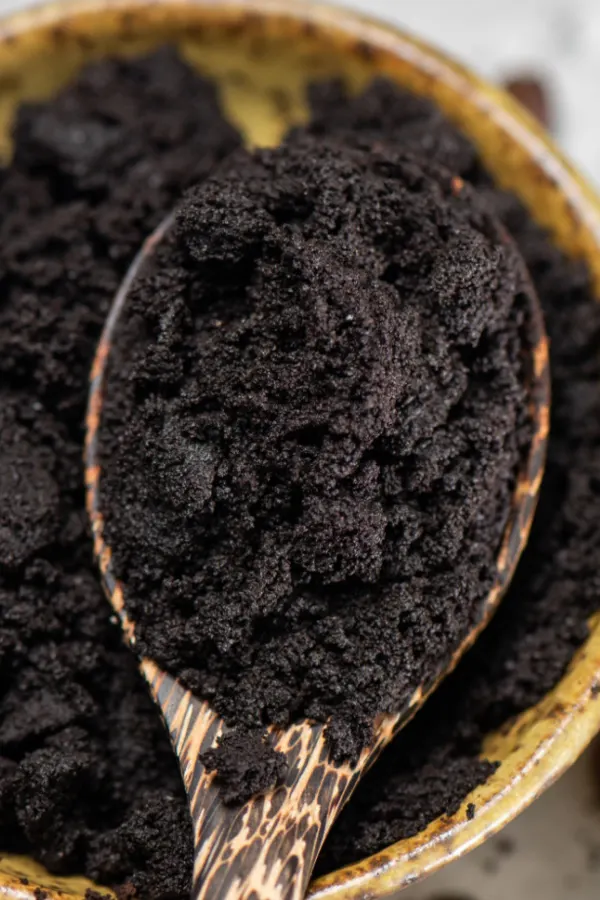Looking for a simple and easy way to quickly turn all of those falling leaves this fall into compost to use to power all of your plants next spring and summer?
Leaves can be a huge resource for gardeners in both flowerbeds and vegetable gardens. Not only are they abundant and free – they are loaded with all kinds of nutrients and energy. Especially when you turn them into incredibly rich compost!
But one thing is for sure, when making compost from leaves, a few simple tips and tricks can make a huge difference in having compost that is ready by spring – or having a pile of leaves that takes years to break down.

Although you can compost leaves along with your regular compost pile, creating a separate pile in the fall can allow you to have fresh compost fast – and not have to wait for all of the other materials to break down along with the leaves. Having a second pile also gives you twice the compost to use!
The good news is that turning a huge pile of leaves into black gold by next spring is easier than you might ever think. In fact, with just a little bit of work this fall, you will be rewarded with loads of powerful compost to help you to your best growing season ever next year.
3 Simple Secrets To Turn Leaves Into Compost – Fast!
#1 Selecting The Best Leaves
When it comes to using leaves as a mulch or in compost, one thing is for certain, not all varieties of leaves are the same. In fact, some trees produce leaves that can actually harm plants. Or even kill them!
While most leaves are completely safe there are some varieties that can poison plants. Meanwhile, others can change the pH of the pile, leaving it far too acidic for most plants. Last but not least, some leaves are so thick and waxy, they slow down the decomposition of a compost pile. And that can lead to long wait times for finished compost!

Leaves To Avoid: How To Turn Leaves Into Compost – Fast!
So what leaves should you avoid? The big ones to avoid are leaves from walnut, beech, holly, magnolia, buckeye (horse chestnut) and oak trees.
Walnut trees produce a chemical in their roots, stems and nuts that is toxic to many plants. That same chemical can also be found in trace amounts in its leaves. And if you turn them into compost, the chemical can pass through in the soil.
Many vegetable plants such as tomatoes, peppers, potatoes, asparagus and cabbage are affected by the chemical. As are peonies, rhododendrons, lilacs and azaleas. For this reason – it’s best never to compost leaves from walnut trees.
Although the leaves of the buckeye tree do not contain a harmful chemical, the nuts do. And all too often, they get raked up with the leaves. Again, it’s just best to avoid using them. As for beech, holly and magnolia trees, they contain a compound that will slow decomposition, which means it can take forever for your leaf pile to break down.
You can use oak leaves but use them in moderation. They contain a lot more acid and can change the pH if too many are present. For best results, try to always keep your leaf piles to less than 20% oak leaves.
So what leaves are good? The leaves from maple, elm, ash, birch, cottonwood, poplar, and wild cherry are excellent. As are any leaves from apple, cherry, plum, peach or other fruit trees.

#2 Shredding Leaves – How To Turn Leaves Into Compost
Now that you know what leaves to use, the next secret is to shred your leaves into the tiniest pieces you can.
Without a doubt, the single biggest mistake gardeners make when trying to compost leaves is leaving them whole. Whole leaves can take years to break down in a pile. They become wet and moldy and decomposition slows to a crawl.
By simply shredding your leaves with a lawn mower or leaf shredder, you can reduce the time it takes for your compost pile to break down by ten times or more. So shred those leaves as small as you can!
#3 Making The Perfect Leaf Compost Pile – How To Turn Leaves Into Compost
Once you have a big pile of shredded leaves, all that is left is to add in ingredients that will help heat up the pile to break them down and decompose quickly.

For starters, it’s important to create the perfect size pile. Too small and it can generate enough heat. Too large and it becomes impossible to turn and work. An ideal size for a leaf compost pile is 3′ wide x 3′ deep x 3′ high or 4′ wide x 4′ deep x 4′ high.
Once you have enough leaves, the second most important thing is to add “green” materials that will heat up the pile. Leaves are a “brown” or dry material. But to get a pile to heat up perfectly, you need a 3 to 1 ratio of brown to green.
Adding Green Materials – How To Turn Leaves Into Compost
The best green materials to add to a leaf compost pile are green grass clippings, coffee grounds, ground egg shells and vegetable scraps and animal manure from chickens, horse, cow, rabbit or goats. All of these break down quickly and will help heat the pile up.
In addition to these green materials, it’s also important to add a compost starter. A compost starter adds instant microbes and bacteria that help the pile start to break down.

For this, you can either add fresh compost or a commercial compost starter. This step is big! It will get your pile cooking fast! Affiliate Product Link: Jobe’s Organics Fast Acting Granular Fertilizer Compost Starter
Maintaining Your Pile – How To Turn Leaves Into Compost
Once your pile is complete – it’s all about keeping it moist and turned. A compost pile needs moisture to heat up. A good compost pile should be slightly moist in the middle, much like a wet sponge.
If you are experiencing a dry fall, be sure to add water to your pile weekly. In addition, you should be turning your pile at least once a week. This adds oxygen to the core, which along with moisture will heat the pile quickly. If you can turn two to three times a week – even better! See our article: How To Take Care Of A Compost Pile – 4 Secrets To Make Great Compost!
Continue adding coffee grounds and vegetable scraps through the fall. These break down fast and will keep the pile cooking. The pile will slow down over winter, but once it thaws it will continue to break down in early spring.
Continue to turn your pile early in the spring as it thaws. By the time you are ready to plant outdoors – your compost should be more than ready to go! For more great ways to use those fallen leaves, see: How To Recharge & Protect Your Garden With Leaves This Fall & Winter.
Simple Garden Life
Follow Our Facebook Page For Even More Great Tips! Simple Garden Life Facebook Page
Simple Garden Life is a website dedicated to keeping gardening fun, simple and enjoyable! We publish two new articles each week along with a new garden podcast episode every two weeks. This article may contain affiliate links.
